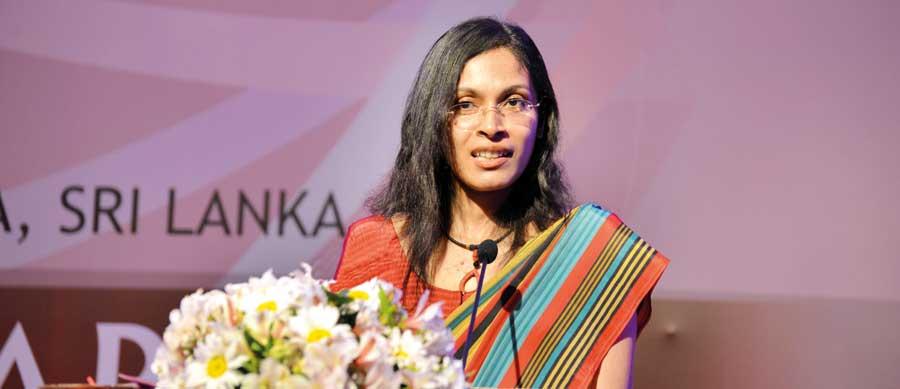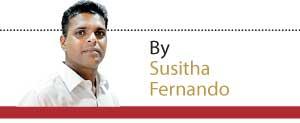
- Adequate and rational testing is a must to identify new patients, new outbreaks in new locations
- The current strain may have come from elsewhere
- It is important to get rid of the stigma. It’s not anyone’s fault if someone gets COVID-19
- We should aim to go back to normal live as fast as possible, within the safety frameworks
- Let’s not stigmatize those with COVID19. Also let’s stop the blame game
- Long term complications were seen in young adults; such as fatigue, lack of concentration, lack of fitness for many months after getting COVID-19
- Individuals (both symptomatic and asymptomatic) can be PCR positive for many days and even more than two months. But they do not shed infectious viral particles after 10 days
As the Western Province, the economic hub of the country is opened after nearly two weeks of lockdown and people are eager to get back to their normal lives, medical experts say that those asymptomatic or do not show  symptoms of COVID-19 and those with mild illnesses would not carry infectious virus after seven days and definitely not after 10 days.
symptoms of COVID-19 and those with mild illnesses would not carry infectious virus after seven days and definitely not after 10 days.
Prof. Neelika Malavige, Head of Department of Immunology and Molecular Medicine and Director of the Centre for Dengue Research, Faculty of Medical Sciences, University of Sri Jayawardenapura said those infected with COVID-19 should not be marginalised or stigmatized by society.
Prof. Malavige who is also an academic visitor at the Medical Research Council (MRC) Human Immunology Unit, University of Oxford and a member of the Executive Committee of the International Society of Infectious Diseases said that the country should not go for island-wide lockdown as it would create devastating social and economic consequences.
However she insisted that measures like isolating certain areas where there were high transmission and temporary lockdowns where there were many cases, should be implemented. This is to stop the spread of the highly contagious virus as there was a high risk of deaths for vulnerable people like those who are ageing and suffering from ailments such as diabetes, cancer and heart ailments. She also stated that it is important to test all symptomatic patients all over the country and do screening of high-risk groups to catch any outbreaks as early as possible.
The highly qualified medical expert said we should aim to get back to normal lives as fast as possible within the safety framework and should fight the deadly virus united as a country.
The Excerpts:
 Q Your latest finding has shown that after seven days of infection of Covid-19, a recovered patient would not be contagious and others would not get infected from him/her. Could you please explain this?
Q Your latest finding has shown that after seven days of infection of Covid-19, a recovered patient would not be contagious and others would not get infected from him/her. Could you please explain this?
These are not our findings. Many world research groups have been investigating this and have shown that although the virus may be present in saliva and sputum in a patient for a long period, there is no infectious virus after seven days and definitely not after ten days. This is true only for those with asymptomatic (those who don’t show symptoms) or those with mild illnesses. Those who develop severe illness or complications due to COVID-19 or who are immunocompromised have shown to shed infectious virus for longer periods or more than ten days. PCR tests and antibody tests are done on such individuals before they are sent home from hospital. The guidance on how long people are infectious has been issued by many leading world authorities such as the Centres for the Decease Control (CDC) in the United States. (https://www.cdc.gov/coronavirus/2019-ncov/hcp/duration-isolation.html)
Q On what basis the seven or ten days are counted?
A patient becomes infectious around 48 hours before he or she shows symptoms. Then patients who develop symptoms remain infectious for 7 to 10 days since onset of symptoms. Most individuals become non-infectious by day 7 since onset of symptoms but a minority of those infected is infectious up to 10 days since onset of symptoms.
Since asymptomatic individuals don't show any symptoms, there is no way to tell when they got infected. In such individuals, the first date of PCR positivity is taken as day one. They are considered infectious from day 7 to 10 since PCR positivity.
Individuals (both symptomatic and asymptomatic) can be PCR positive for many days and even more than two months. But they do not shed infectious viral particles after 10 days.
"I don’t think we should go for island wide lockdowns as it would have devastating social and economic consequences. This virus will be with us for a long time and a vaccine is not going to come tomorrow. However, it is important to isolate certain areas where there is high transmission and many cases, to stop it spreading to other areas in the country"
Q Does this mean the society can move around with a person recovered from COVID-19 infection after seven days and there should not be fear or social marginalization?
Our Ministry of Health Guidelines state that a COVID-19 infected person is only discharged from a quarantine centre after 14 days. This is to be more cautious, although studies have shown that patients are not infectious after ten days. There should not be a stigma. It is important to get rid of the stigma. It’s not anyone’s fault if someone gets COVID-19. All of us have got common colds so many times. Was it our fault that we got a common cold? Stigmatization is extremely dangerous and prevent people who may have symptoms coming forward to get tested or those who are developing severe disease to seek treatment in hospitals. More than that, it causes severe psychological trauma. We are known to be a caring nation. Now is the time to show that we care for others.
Q If this is true, how is it that some people who recovered from the Covid-19, were infected again? Are they rare occasions?
Unfortunately yes. It has been shown conclusively that some individuals were re-infected by the virus 3 or 4 months after the initial infection. Not many people. We don’t know how frequent re-infection is and how it will have an impact on controlling the infection right now.
Q We are told about different clusters like Minuwangoda, Peliyagoda and others. Are these clusters identified with scientific knowledge of the virus strain or on the basis of person to person physical contact?
As far as the virus goes, it was the same virus strain seen in all these clusters.
Our laboratory did sequence viruses from all these different clusters. So it appears like one strain is responsible for the whole outbreak.
We are currently doing more sequencing, as it is important to continue to study the virus evolution and strains. However, such studies are only useful for determining the spread and sources of outbreak here and the data are important to the epidemiologists.
The most important factor for the people is to know there is only one virus responsible for COVID-19, and the disease’s severity caused by these different strains are not different. However, the currently circulating strain has a particular mutation associated with higher transmissibility. This is mutation associated with increased transmissibility which is seen in around 97 per cent and strains all over the world. So this is nothing new.
"It is important to isolate certain areas where there is high transmission and many cases, to stop it spreading to other areas in the country. It is very important to test all symptomatic patients all over the country presenting with such features and do screening of high-risk groups to catch any outbreaks in such groups very early"
Q The Third world or developing countries like Bangladesh are said to be continuing their day-to-day activities, despite the virus spread and said to have successfully fought the virus. Should this be an example to Sri Lanka with an almost similar social, political and economic backdrop?
I don’t think we should go for island wide lockdowns as it would have devastating social and economic consequences.
This virus will be with us for a long time and the vaccine is not in sight in the nearest future. However, it is important to isolate certain areas where there is high transmission and many cases, to halt spreading to other areas in the country. It is important to test all symptomatic patients all over the country presenting with such features and do screening of high-risk groups to curb any outbreaks in such groups early.
However, temporary lockdowns restricted to certain areas for shorter periods may be needed, if the health systems are overloaded, just to manage the patient loads.
We should aim to go back to normal life as fast as possible, within the safety frameworks. But we need to understand that things might not be 100% normal for quite some time.
Q The findings of the team you lead show that the current virus strains circulating in different places in the country are of the B.1.42 lineage (clade 20C), and they are of a common origin. Did this strain come from outside the country or did it develop from the previous strains which circulated in Sri Lanka and that was of the B.1, B.2, B 1.1 and B.4 lineages?
As I mentioned earlier, the data regarding the virus strains are only important to study the epidemiology of the virus spread.
We know that the lineages so far have been B.1. etc… The current strain may have come from elsewhere. However, at the same time, it is possible for the local strain to mutate and acquire the characteristics of strains seen elsewhere. Therefore, I don’t think we should put too much emphasis on the lineages of the strains seen here before and now. The virus lineages and information about clades are updated in these virus data resources on a daily basis.
"Many research groups in the world have been investigating this and have shown that although the virus may be present in saliva and sputum in a patient for a long period, there is no infectious virus after 7 days and definitely not after 10 days"
Q Are these new strains of virus similar to those found in worst hit countries like China (at initial stages), Italy, US and other nations?
All the strains in these countries have also undergone changes, so none of these countries has the same strains that were seen in the beginning of the pandemic.
Q Are there virus with worse strains being spread in other parts of the world, and if so, would there be a danger of those coming into Sri Lanka?
As mentioned earlier, there is just one SARS-CoV2 virus that is causing COVID-19. So far, there is no data that one virus strain is more dangerous than another. However, the D614G mutation that is currently seen in our virus strains and in many other countries, is associated with higher transmissibility. So we need to take extra care and precautions now and social/physical distancing is important.
Q Do you think once the country is opened today, it would continue to allow movement of people? What precautions should the people take in your view?
I hope so. The high risk areas are isolated. But that does not mean we are safe. Adequate and rational testing is a must to identify new patients, new outbreaks in newly identified locations.
"However, temporary lockdowns, restricted to certain areas, for short periods may be needed, if the health systems are overloaded, just to manage the patient loads. We should aim to go back to normal life as fast as possible, within the safety frameworks"
Q Some are of the opinion that there is unnecessary fear psychosis created on COVID-19. Is this a correct stance?
I don’t know about unnecessary fear. That is not useful. What is important is to understand that there is a high risk of mortality in vulnerable populations. i.e those who are ageing would have underlying ailments such as diabetes, cancer, heart ailments etc. Long term complications have been seen in young adults too such as fatigue, lack of concentration, lack of fitness for many months after getting COVID-19. So we have to make sure that we minimize the spread as far as possible.
Q Is there any other message you want to share with the people?
Let’s live up to our reputation as caring human beings. Let’s not stigmatize those with COVID-19 or say anything likely to hurt them. Also let’s stop the blame game, where some people try to find fault with the government, health ministry, doctors, nurses and the armed forces. They are trying their best under difficult circumstances. Ask yourself as to what you could do to make things better for yourself and everyone else. Let’s fight this together.
Dr. Malavige has also shared some online reading materials that provide information in lay language.
https://www.forbes.com/sites/brucelee/2020/04/21/covid-19-coronavirus-how-long-are-you-contagious-and-do-symptoms-last/?sh=4f944e71165e
https://www.health.harvard.edu/diseases-and-conditions/if-youve-been-exposed-to-the-coronavirus

 symptoms of COVID-19 and those with mild illnesses would not carry infectious virus after seven days and definitely not after 10 days.
symptoms of COVID-19 and those with mild illnesses would not carry infectious virus after seven days and definitely not after 10 days.  Q Your latest finding has shown that after seven days of infection of Covid-19, a recovered patient would not be contagious and others would not get infected from him/her. Could you please explain this?
Q Your latest finding has shown that after seven days of infection of Covid-19, a recovered patient would not be contagious and others would not get infected from him/her. Could you please explain this?